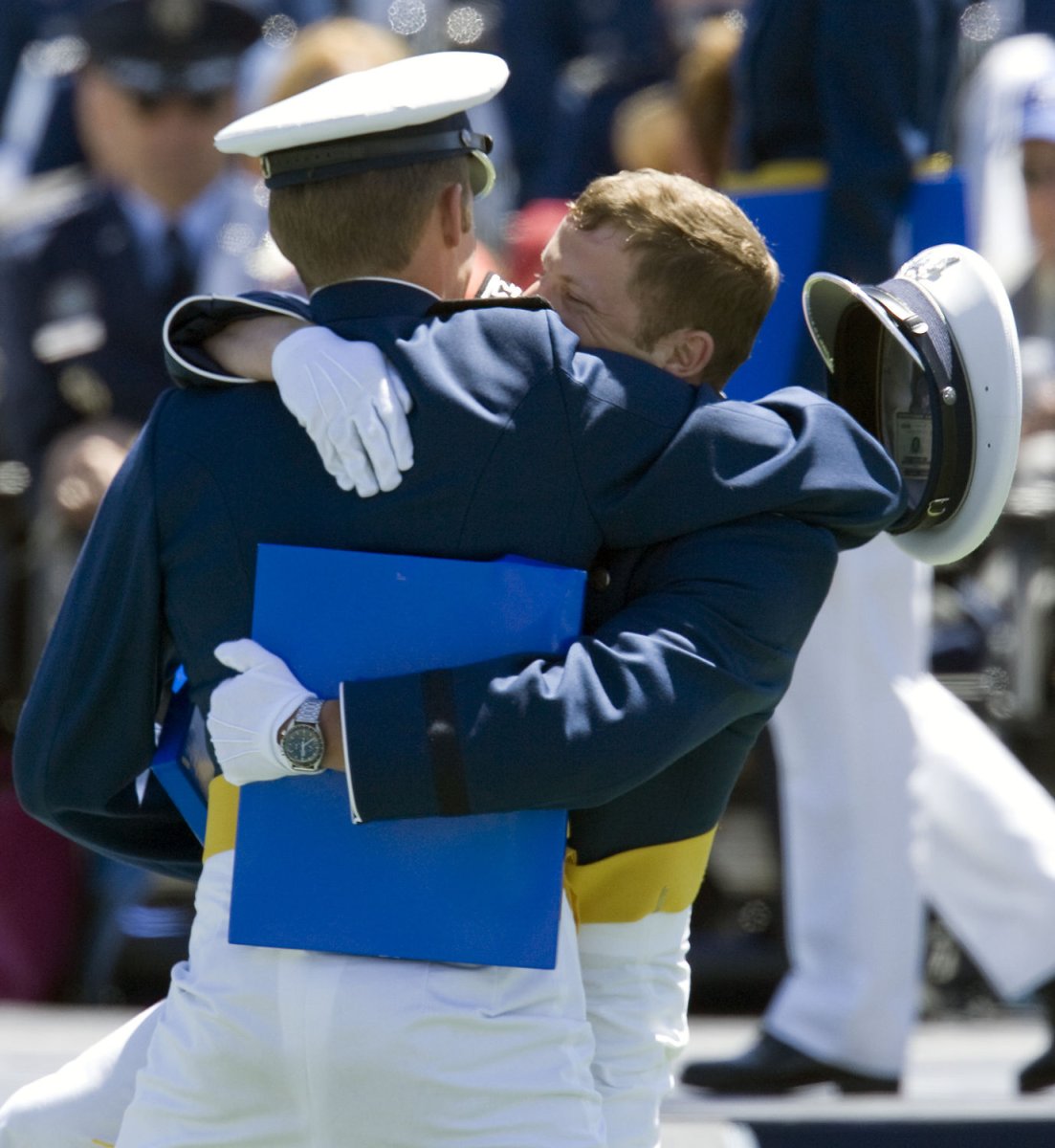Swine flu worries limit touching in Samoa
Published: Sept. 4, 2009 at 11:33 AM
Order reprints
A cadet loses his hat while hugging a friend during the 2009 United States Air Force Academy graduation ceremony in Colorado Springs, Colorado on May 27, 2009. (UPI Photo/Gary C. Caskey)
NEW YORK, Sept. 4 (UPI) -- Samoans may be best prepared to avoid transmitting the H1N1 swine flu because of their island customs, an anthropologist says.
Alessandro Duranti, who specializes in linguistics, says in Samoa people to do not touch when they greet each other, The New York Times reported Friday. Unfortunately, that is not true in the rest of the world where shaking hands, kissing or hugging is a traditional method of greeting.
In Glen Cove, N.Y., school officials are discouraging students from exchanging high-fives while Spain's health minister is asking citizens to forgo the customary greeting of a kiss on both cheeks.
In the Middle East, officials from Lebanon to Kuwait are calling on Muslims celebrating Ramadan not to engage in excessive hugging.
"The closer your mucus membranes come to the other person's mucus membranes, the risk is going to increase," says Philip L. Graham III, a pediatric epidemiologist at New York-Presbyterian Hospital.
Published: Sept. 4, 2009 at 11:33 AM
Order reprints
A cadet loses his hat while hugging a friend during the 2009 United States Air Force Academy graduation ceremony in Colorado Springs, Colorado on May 27, 2009. (UPI Photo/Gary C. Caskey)
NEW YORK, Sept. 4 (UPI) -- Samoans may be best prepared to avoid transmitting the H1N1 swine flu because of their island customs, an anthropologist says.
Alessandro Duranti, who specializes in linguistics, says in Samoa people to do not touch when they greet each other, The New York Times reported Friday. Unfortunately, that is not true in the rest of the world where shaking hands, kissing or hugging is a traditional method of greeting.
In Glen Cove, N.Y., school officials are discouraging students from exchanging high-fives while Spain's health minister is asking citizens to forgo the customary greeting of a kiss on both cheeks.
In the Middle East, officials from Lebanon to Kuwait are calling on Muslims celebrating Ramadan not to engage in excessive hugging.
"The closer your mucus membranes come to the other person's mucus membranes, the risk is going to increase," says Philip L. Graham III, a pediatric epidemiologist at New York-Presbyterian Hospital.

Comment